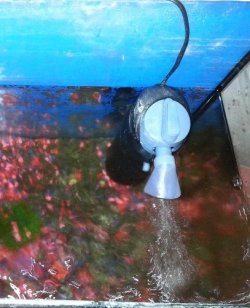Welcome to the forum!
The advice you've gotten is sound. Adding to the tank until it is being properly maintained will be a death sentence to the new fish. I would suggest that you do the water changes as suggested by sadguppy, for a week, then do a larger 50% water change... when refilling just make sure to add the water back in slowly. Fish can acclimate to new water chemistry, it just takes time. A week of frequent (twice a day) and small water changes as sadguppy suggested should bring the water back into a reasonable level. Doing a larger water change and slowly refilling after that will give you a chance to really get the thing cleaned up. Before that larger water change, do a complete scrubbing of the walls of the tank with an algae scrubber. Try to get the bits of algae that are loosened removed during the siphoning process. The fish will be fine during this time even with the filter off. If you are overly concerned, get some Prime or Stress Coat and add that to the tank. These are dechlorinators but also deal with ammonia and nitrite if it were to build up.
Eventually, you can consider some easy plants, like anubias, java fern, etc.
The advice you've gotten is sound. Adding to the tank until it is being properly maintained will be a death sentence to the new fish. I would suggest that you do the water changes as suggested by sadguppy, for a week, then do a larger 50% water change... when refilling just make sure to add the water back in slowly. Fish can acclimate to new water chemistry, it just takes time. A week of frequent (twice a day) and small water changes as sadguppy suggested should bring the water back into a reasonable level. Doing a larger water change and slowly refilling after that will give you a chance to really get the thing cleaned up. Before that larger water change, do a complete scrubbing of the walls of the tank with an algae scrubber. Try to get the bits of algae that are loosened removed during the siphoning process. The fish will be fine during this time even with the filter off. If you are overly concerned, get some Prime or Stress Coat and add that to the tank. These are dechlorinators but also deal with ammonia and nitrite if it were to build up.
Eventually, you can consider some easy plants, like anubias, java fern, etc.

